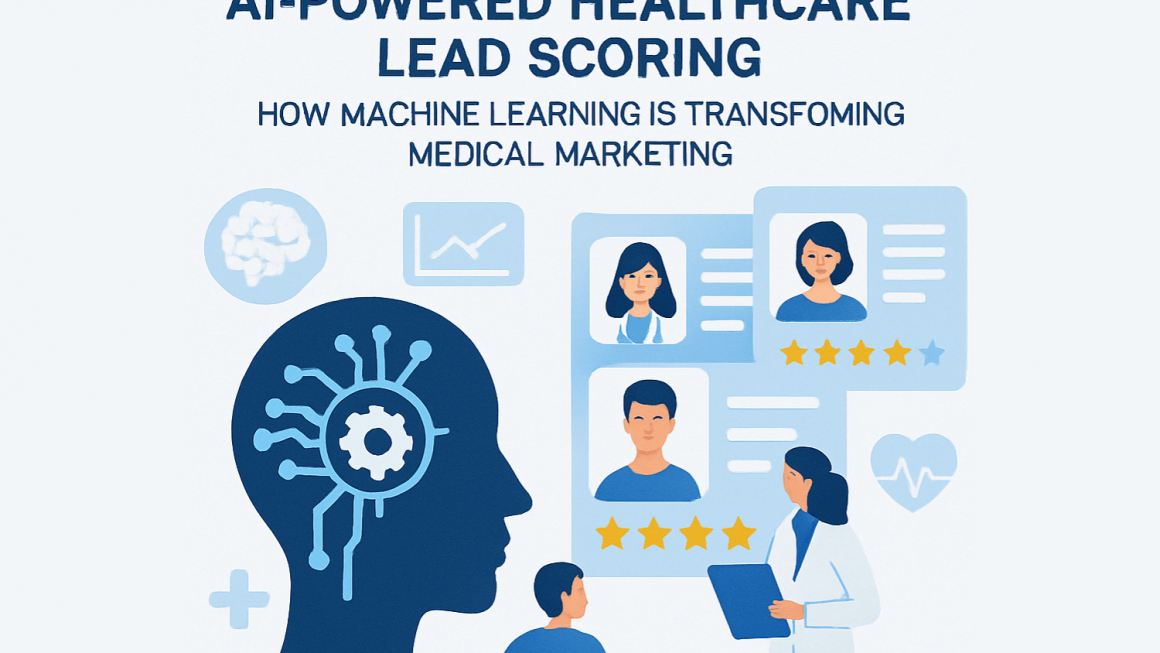In the highly competitive world of healthcare marketing, reaching physicians and building strong, lasting relationships is more critical than ever. Doctors have packed schedules and face constant pressure to make decisions that affect their patients and practices. This is where lead nurturing plays a crucial role. It helps healthcare marketers build meaningful connections with physicians by offering valuable resources and earning their trust over time.
What is Lead Nurturing for Healthcare Marketers?
Lead nurturing means building genuine connections with physicians by recognizing the hurdles they face—like time management or staying up-to-date with regulations. Instead of focusing on quick sales, this approach involves sharing practical resources, like guides on streamlining patient care or case studies on cost-saving solutions. It’s about showing doctors that your organization is here to help, not just sell, and earn their trust as a reliable partner throughout their journey.
For healthcare marketers, this means engaging physicians throughout their decision-making journey, from initial awareness of your offerings to becoming long-term clients. This strategy relies on delivering the right message at the right time, using tools like personalized emails, educational resources, and professional webinars.
Why is Lead Nurturing Crucial for Healthcare Marketers?
Physicians receive countless promotional messages daily, making it challenging to stand out. A well-thought-out lead nurturing strategy helps you:
- Build Trust: By offering valuable insights and solutions, you establish credibility and become a trusted resource.
- Demonstrate Value: Physicians want to know how your products or services can make their practices more efficient, compliant, or patient-friendly.
- Increase Conversion Rates: Nurtured leads are more likely to convert into loyal clients because they feel understood and supported.
The Psychology Behind Physician Decision-Making
Understanding how doctors make decisions is key to effective lead nurturing. Physicians face unique challenges, such as managing patient care, keeping up with medical advancements, and navigating complex regulatory environments. Their decisions are informed by a combination of professional expertise, peer recommendations, and practical considerations like cost and efficiency.
Emotional and Rational Factors
Doctors make decisions based on both emotional and rational factors. For example, a physician choosing a new patient management system might consider its features and benefits (rational) but also how the system will reduce stress and improve workflow (emotional). Addressing both aspects in your marketing can create a stronger connection.
The Importance of Peer Influence
Physicians often trust the recommendations of colleagues or medical associations. Highlighting testimonials, case studies, or endorsements from respected peers can significantly influence their decisions.
Steps to Build a Strong Lead Nurturing Strategy
1. Segment Your Audience
Not all physicians have the same needs. Segmenting your audience allows you to tailor your messages and provide content that resonates with specific groups. Consider factors like:
- Specialty: Cardiologists may need solutions different from family practitioners.
- Practice Setting: Independent doctors might prioritize cost-effective tools, while hospital-based physicians may focus on efficiency and integration.
- Experience Level: Newly established doctors might require guidance, while experienced professionals look for advanced solutions.
2. Provide Valuable Educational Content
Doctors appreciate tools and information that make a real difference in their practice and patient care. For example, accessing a well-researched physicians email list can help healthcare marketers effectively target and communicate with specific medical professionals. Sharing educational content not only supports their goals but also establishes your credibility and keeps them interested in what you have to offer.
Examples include:
- Whitepapers and Guides: In-depth explorations of topics like practice management or regulatory changes.
- Webinars: Sessions on emerging medical trends or innovations in healthcare technology.
- Case Studies: Real-world examples showing how your product or service has helped other physicians.
Keep the tone professional but approachable. Avoid excessive technical terms and focus on practical takeaways.
3. Personalize Your Communication
Generic messages often fail to engage physicians. To make your communication more impactful, focus on personalization. Here are some ways to tailor your outreach:
- Use the physician’s name and reference their specialty to show that you recognize their unique expertise.Lead nurturing goes beyond gaining new clients.
- Suggest resources or solutions that align with their previous interactions or expressed interests.
- Share timely updates or reminders that address their specific needs and priorities.
Personalization demonstrates that you understand and value their time, making your messages more likely to resonate.
4. Utilize Multi Channel Communication
Reaching physicians through multiple channels ensures your message gets noticed. Consider:
- Email: Ideal for sharing newsletters, updates, and educational content.
- LinkedIn: A professional platform where you can engage with doctors through articles or messages.
- Webinars: Interactive sessions that allow doctors to learn and ask questions.
- Direct Mail: Physical brochures or resources can make a memorable impact.
Consistency across these channels reinforces your message and builds trust.
5. Use Marketing Automation
Marketing automation tools make it easier to manage and grow your lead nurturing efforts. Here’s how they can help:
- Automatically follow up when a physician takes an action, like downloading a resource or joining a webinar.
- Send a series of emails over time (drip campaigns) to provide helpful information and guide them through their decision-making process.
These tools save time and ensure your communication stays consistent and relevant.
Examples of Lead Nurturing Content
Educational Resources
- How to Improve Practice Efficiency with Technology A guide showcasing how your tools can save time and reduce administrative burdens.
- Understanding New Healthcare Regulations: A resource to help doctors navigate complex compliance requirements.
Webinars and Virtual Events
- Host live sessions with industry experts discussing trends or challenges in healthcare.
Case Studies
- Share success stories of other physicians who’ve benefited from your products or services. Include metrics like time saved, costs reduced, or patient outcomes improved.
Interactive Tools
- Offer calculators, quizzes, or checklists to help physicians evaluate their needs and explore your solutions.
Timing and Frequency in Lead Nurturing
Overwhelming physicians with too many messages can backfire, while infrequent communication risks losing their interest. Develop a communication schedule that aligns with their needs and decision-making process:
- Initial Interest: Weekly updates to provide relevant resources and maintain engagement.
- Mid-Journey: Biweekly messages with more detailed content or offers to connect directly.
- Decision Stage: Timely follow-ups and case studies to reinforce your value proposition.
Always provide an option to adjust frequency or unsubscribe to respect their preferences.
Compliance and Privacy Considerations
Healthcare marketing is subject to strict regulations, particularly concerning data privacy. Adhering to compliance standards like HIPAA ensures your lead nurturing efforts are both ethical and effective.
Best Practices for Compliance
- Obtain explicit consent before sending marketing communications.
- Clearly explain how you collect, store, and use data.
- Ensure all tools and platforms you use are HIPAA-compliant.
- Regularly review and update your privacy policies.
Measuring Success and Improving Your Strategy
To ensure your lead nurturing efforts are effective, focus on continuous improvement. Use data to understand what’s working and where you can do better:
- Engagement Rates: Check how often physicians open your emails or participate in webinars.
- Conversion Rates: Track how many leads turn into clients.
- Feedback: Listen to what physicians say about your communication and what they find most useful.
This information helps you adjust your content, timing, and communication methods to better meet their needs and build stronger connections.
The Role of Technology in Lead Nurturing
Modern marketing technology makes lead nurturing more efficient and effective by streamlining complex processes. Here are some essential tools to enhance your strategy:
- CRM Systems: Manage physician contact details, track interactions, and organize leads to ensure personalized communication.
- Marketing Automation Platforms: Save time by automating tasks like email campaigns, follow-up reminders, and engagement tracking.
- Analytics Tools: Measure the success of your efforts, identify what’s working, and uncover areas for improvement.
Building Long-Term Relationships
Lead nurturing goes beyond gaining new clients—it’s about creating strong, lasting connections with physicians. Tools like a physicians email list or specialized databases like a urologist email list can help you maintain these relationships by ensuring your communication remains relevant, timely, and valuable.
To build these relationships:
- Consistently Provide Value: Share resources, insights, and solutions that are genuinely helpful to their practice.
- Address Their Needs: Listen to their concerns and offer tailored support that aligns with their challenges.
- Showcase Your Expertise: Demonstrate your knowledge and reliability to earn their trust over time.
Conclusion
Effective lead nurturing for healthcare marketers is about understanding physicians’ challenges, providing personalized solutions, and maintaining consistent, meaningful communication. By focusing on education, personalization, and trust, you can build relationships that benefit both your organization and the doctors you serve.
This guide will walk you through the essentials of lead nurturing for healthcare marketers and provide actionable steps to create meaningful connections with physicians.




